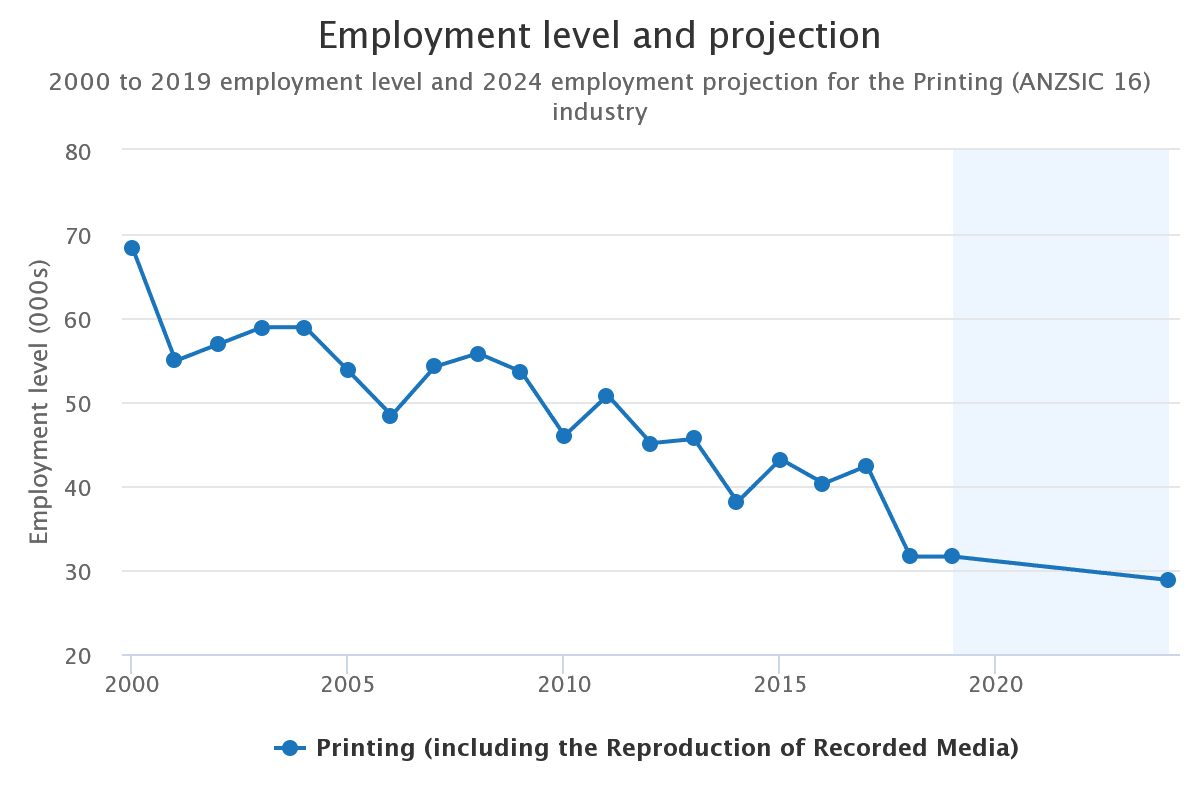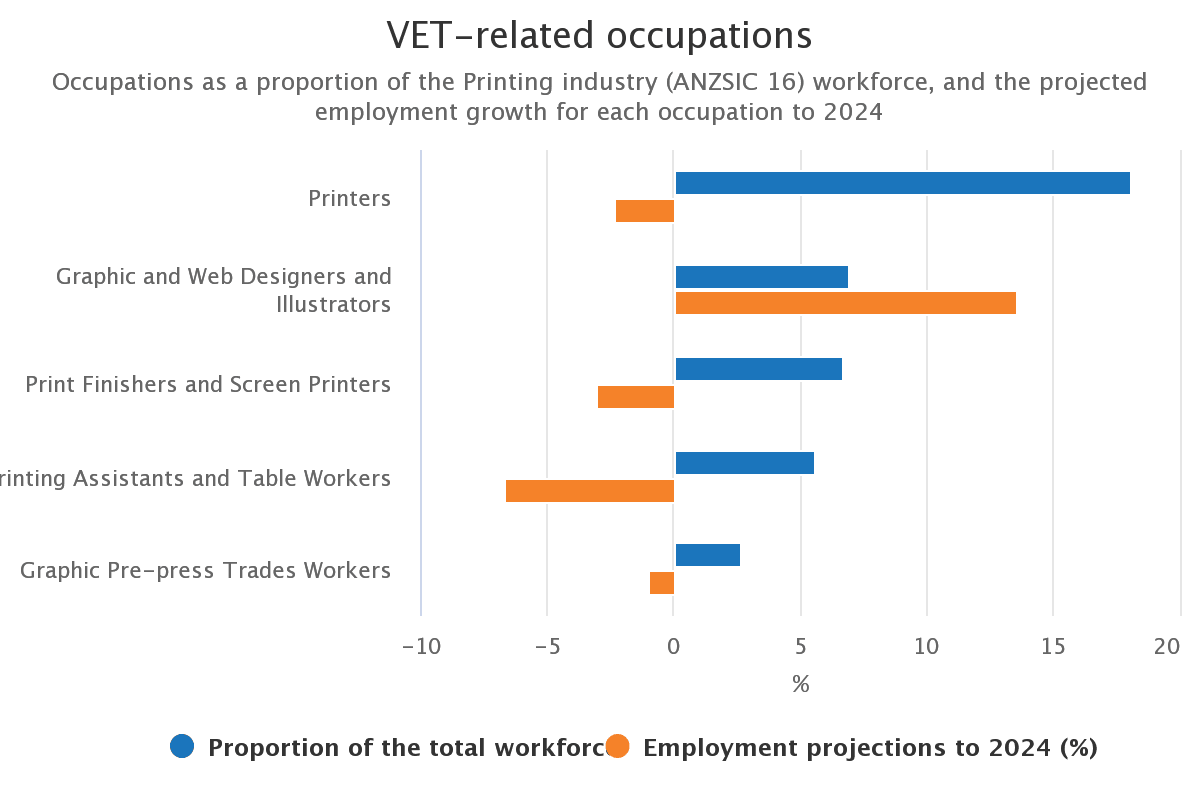Australia is growing as the center of the largest manufacturers in the printing industry. Printing and art graphics playing the main role in driving the economy and workforce, with an estimated 6,500 businesses in operation and almost 27,000 people employed in occupations.
The industry is effectively managing a wide variety of operations and assisting creative industries to deliver their products. There are a wide variety of sectors that the printing industry manages alone including desktop publishing, digital printing, graphic press, multimedia, print finishing, print production, printing, and screen printing.
As different parts of sectors are growing, contracting, or transforming in response to external forces, therefore, it becomes necessary to look at the growth of its employment trends –

As we look at the chart above, overall employment in the printing and graphics arts industry declined by more than 50% between 2000 and 2019, which is expected to decrease further by 2024. However, this data is from the ANZSIC classification of the printing industry, there are some other areas of industry that may have some growth – so, do not include other broad elements of the printing and graphic arts industry.

The Printers sector has the largest proportion of this workforce at just over 18% while the employment projection declined by 2.3%, which is expected to decrease further between 2019 to 2024, while the graphic, web designers, and Illustrators predicted 14% growth by 2024. Print Finishers and Screen Printers are also predicted to fall by 3%.
Job Vacancy Occupation in Demand
The most occupation job vacancies in demand are –
- Sales and Marketing Manager
- Screen Printer
- Printing Machinist
- Graphic Designer
- Machine Operators
The Demand of the Printing Industry in the Market
Changing market demand has led to a decline in some products such as printing newspapers and magazines, this is because the market is shifting online, with people more likely to read online than print editions. According to the source, it has been found that digital media is growing rapidly while print media is continuously decreasing.
According to the data, more than half the world’s adult population read a newspaper: more than 2.5 billion in print and more than 600 million in digital form which is continuously increasing every year.
But there are some other areas that have the potential to grow, such as printing consumer advertising (eg, printing catalogs and direct mail), packaging and food labeling, printing for publication, general business products, and events.
In a recent industry report, around 67% of businesses around the globe believe that by the year 2025 the demand for printing machines will increase in every sector.
Technology Changing the Printing Industry
Technology has changed the printing and graphic industry in many ways, here are a few of them –
- The first is an offset of the digital printing technology, meaning that new digital printing technologies such as commercial inkjet printing result in rapid turnaround printing services, as well as indicating a reduction in the number of technical staff required for the printing process but Accurate time management and prioritizing skills are also needed for workers.
- The second is growth in on-demand printing, largely driven by newer printing technology, in which book retailers and publishers can hold the digital copies of books and only print books on-demand as the order receives.
- The third one is the printing industry highly moving towards the area of 3D printing which has the potential to have implications for all industries.
- Lastly, automation is expected to impact parts of the industry over the longer term, with print production workflow being one area of the sector with the potential for automation. According to the survey, more than 56% of suppliers wanted to switch to automated printing machines.
Conclusion
Data shown represent most requested generic skills and occupations according to internet job postings in Australia between July 2016 and June 2019 filtered by ANZSIC and ANZSCO classification levels.
But if we compare the above Australian data with other countries then we will see that Australia is growing much faster in printing than any other countries. This is due to the increase in manufacturing, that is the reason Australia is now becoming the center of printing manufacturing.
Trend Offset Printing -DepositPhotos


